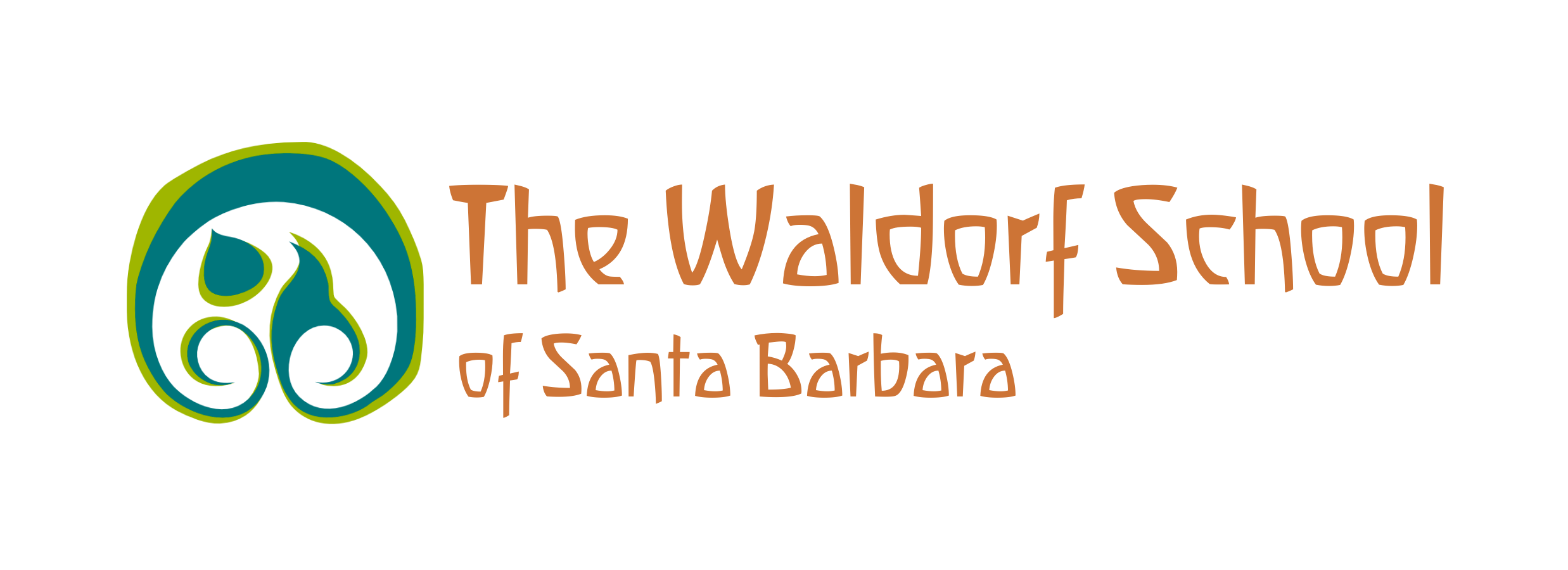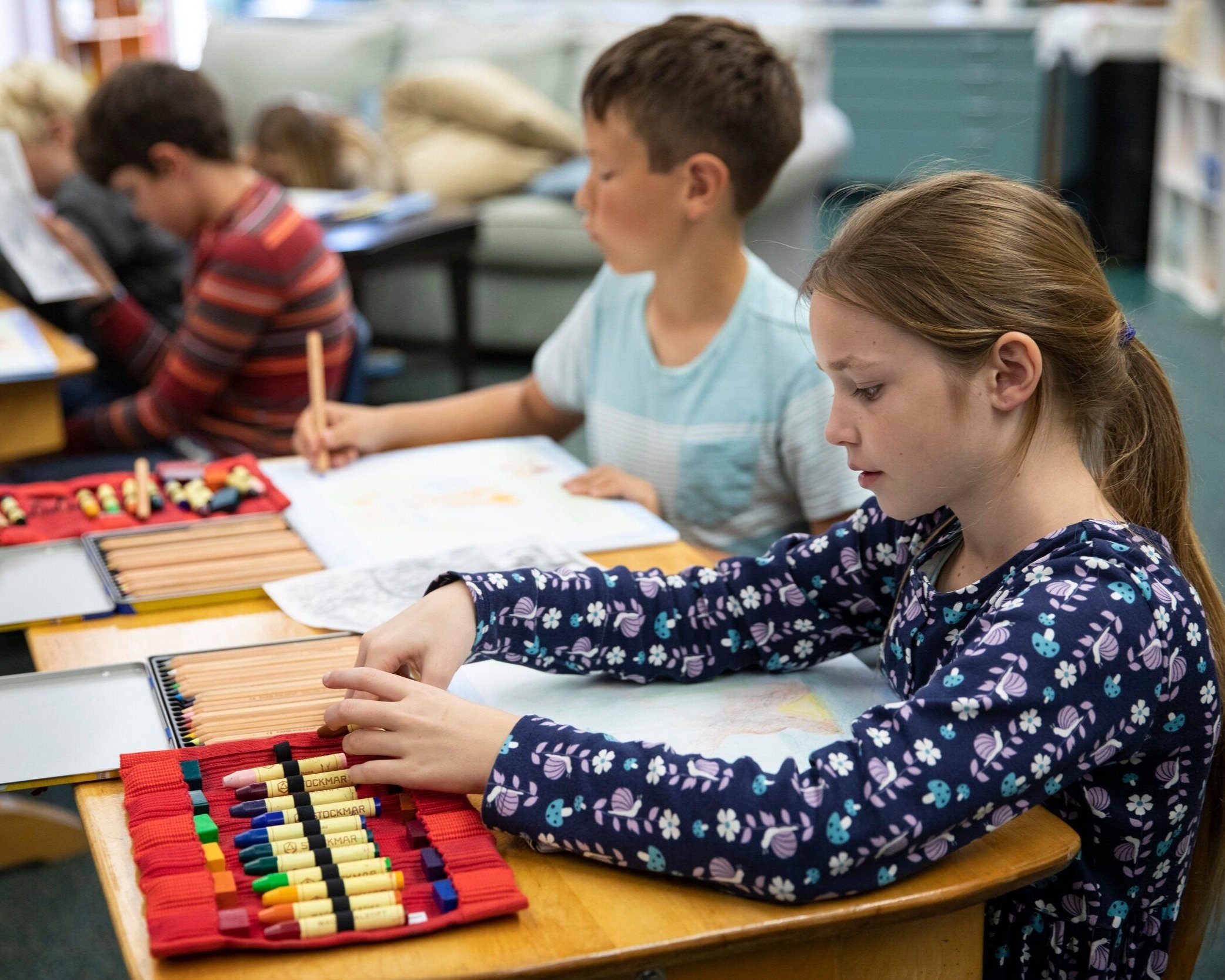A Waldorf Early Childhood and
Elementary Grades Curriculum Overview
Before we want our children to save the world, we want them to fall in love with the world. That is really the most important gift we can give to children if there is to be real hope for the future.
The Waldorf School of Santa Barbara offers a developmentally appropriate and rigorous academic curriculum for the child, and is imbued with experiential, practical, and artistic opportunities daily.
The school-age range begins with children aged 2.5 to 6 plus in our Early Childhood program. Our youngest children usually encounter their first teachers here, and are guided by these important adults who nurture each child’s unfolding with great care. A gentle but sensory-rich atmosphere alive with play-based activities encourages the children to investigate the natural world and develop their first social relationships. The children help their teachers bake and cook every day; they sing and move together in a daily session called Circle Time; they listen to nourishing fairy tales and nature stories from around the world. Outdoor time is part of the daily schedule, come rain or shine, and walks to the park or around the large grassy field round out the day.
Our first grade welcomes children of 6+ to 7 years old. Now formally “Graders,” they can commence onward through the grades, all the way through Eighth Grade graduation. It cannot be stated enough how capable, well-rounded, and prepared our Eighth Graders consistently are for the next step of high school, and how proud we are as teachers and staff of their maturity, readiness, and enthusiasm for the potential that their futures hold.
Every day in the grades classroom we start with a two hour “Main Lesson.” These first two hours of the school day focus on one of the core academic topics assigned to each grade (i.e. Ancient Egypt and the Nile, Zoology, Business Mathematics), with a block of three to four weeks given to each topic. In those two hours we always start with a variety of energizing activities, such as: rhythmic movement with counting, group recitation, singing and flute playing, short math games or spelling challenges, all taken up to help the children come fully and joyfully into their school day. After this opening time, the topic (let’s say Local History and Geography) for this block unfolds through stories that depict that particular historical time frame and descriptions of what the environment was like and of those who lived there. Biographical sketches of notable people from that time bring these stories further to life, enlivening the child’s imagination as to what it must have been like in this other time. From these depictions the next hour plus unfolds with discussing and recalling, writing and illustrating, all to bring the children’s learning from the single activity of listening and thinking into their will and feeling lives.
The students make their own textbooks, which are a combination of final draft writings, descriptions of a math process or science demo observed, and freehand illustrations, all as a notable record of the topic they have just learned about. Their main lesson books become not only beautiful documents of all their work at school, but also treasures that are kept by the families year after year.
From the main lesson, which starts the day, and after a snack and recess time for breathing out, comes a full variety of subject lessons, three per day for the First Graders, and four per day for the Second through Eighth Graders. The Main Lesson has a symbiotic relationship to all the other lessons in that it opens the heart forces and the interest of the children for everything they are about to learn throughout the rest of the day. The Waldorf School of Santa Barbara’s Curriculum Chart, which accompanies this summary description of the school day, briefly describes all subjects assigned to each grade (chart coming soon).
Besides the prerequisite practice lessons in language arts and arithmetic, our Waldorf students have the pleasure of enjoying two lessons per week in the following subjects:
First, Second, and Third grades: Handwork (knitting, crochet), Flute, Spanish, Gardening, and Games (P.E.).
Fourth through Eighth grades: Spanish, Handwork - hand sewing (cross-stitch,embroidery, and other stitches), four needle knitting, and machine sewing, Woodwork (learning how to make useful and imaginative items through the proper use of hand and machine tools), Flute and Recorder, Strings Orchestra, Gardening, Games and Sports.
Early Childhood
Lower School
Middle School



